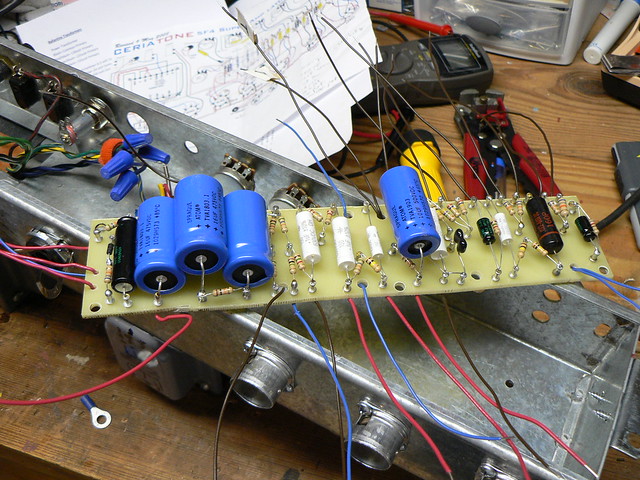Another question, just to make sure I have this right. On the PT, I've noted my assumptions and questionables:
Power Transformer
Black= Common Primary
Red/black= 120volt Primary To power switch
Yellow/black= 125volt Primary Capped off
Green/black= 135volt Primary Capped off
Green and Green/yellow= 6.3 volt Center tapped heater To heaters, but... there are two greens and a green/yellow. Does green/yellow go to ground per the Ceriatone layout? Or, is it capped off?
Blue and Blue/yellow= 24 volt Center tapped Capped off
Red and Red/yellow= 630 volt Center tapped To rectifier, but... there are two reds and a red/yellow. Does red/yellow go to ground? Or, should it be capped?
Yellow= 64 volt tap. To board, change the 68k resistor before the diode for a higher value to lower voltage to 50v.
I'm confused by the "0" markings on the PT. I've done some Googling, but it hasn't cleared it up. I'm assuming it means a center tap that should go to ground in this amp.
Power Transformer
Black= Common Primary
Red/black= 120volt Primary To power switch
Yellow/black= 125volt Primary Capped off
Green/black= 135volt Primary Capped off
Green and Green/yellow= 6.3 volt Center tapped heater To heaters, but... there are two greens and a green/yellow. Does green/yellow go to ground per the Ceriatone layout? Or, is it capped off?
Blue and Blue/yellow= 24 volt Center tapped Capped off
Red and Red/yellow= 630 volt Center tapped To rectifier, but... there are two reds and a red/yellow. Does red/yellow go to ground? Or, should it be capped?
Yellow= 64 volt tap. To board, change the 68k resistor before the diode for a higher value to lower voltage to 50v.
I'm confused by the "0" markings on the PT. I've done some Googling, but it hasn't cleared it up. I'm assuming it means a center tap that should go to ground in this amp.
 I am always checking my assumptions, better to be cautious, I think. Thanks!
I am always checking my assumptions, better to be cautious, I think. Thanks!


Comment